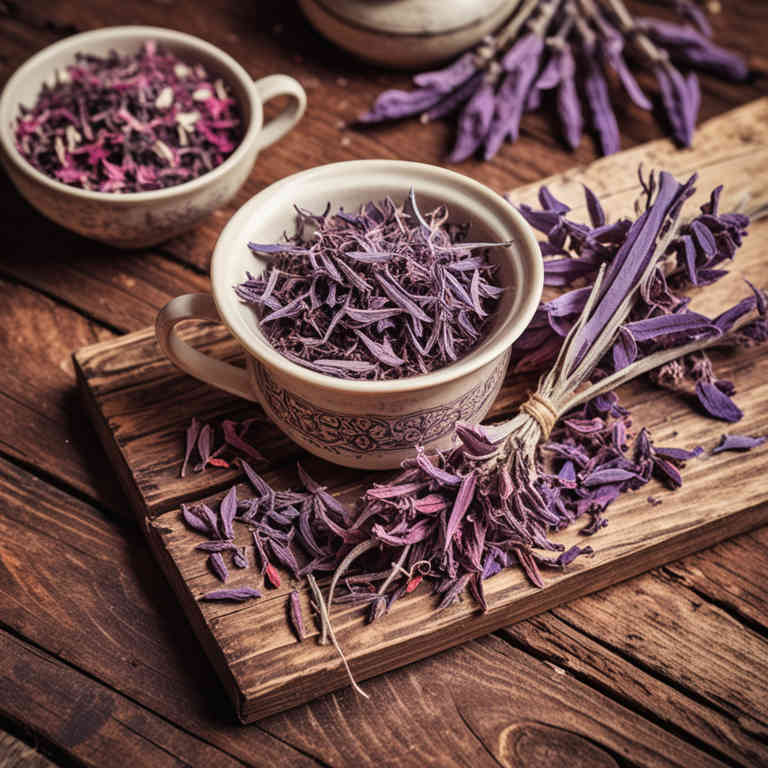Salvia miltiorrhiza tea for medicinal use

Salvia miltiorrhiza tea is a traditional herbal preparation made from the roots of the Salvia miltiorrhiza plant, commonly known as Chinese red sage.
This tea is widely used in herbalism for its potential health benefits, including supporting cardiovascular health and improving circulation. It is often prescribed to help manage conditions such as high cholesterol and blood pressure. The active compounds in the tea, such as tanshinones, are believed to have antioxidant and anti-inflammatory properties.
In traditional Chinese medicine, it is also used to promote blood flow and treat various ailments related to poor circulation.
Uses
Salvia miltiorrhiza tea has been used to promote blood circulation and reduce inflammation for centuries in traditional Chinese medicine.
Historically, it was valued for its ability to support cardiovascular health and treat conditions like coronary artery disease. In traditional practices, it was also used to alleviate symptoms of menopause and improve skin health. Modern research has confirmed its potential benefits, including antioxidant properties and support for liver function.
Today, it is commonly consumed as a herbal tea to enhance overall wellness and address various health concerns.
Benefits
Salvia miltiorrhiza tea has health benefits such as improving circulation, reducing inflammation, and supporting heart health.
It is traditionally used in Chinese medicine to promote blood flow and may help with conditions like cardiovascular disease and diabetes. The tea contains active compounds like tanshinones and salvianolic acids, which have antioxidant and anti-inflammatory properties. It is also believed to support liver function and may aid in reducing oxidative stress in the body.
Regular consumption of this herbal tea may contribute to overall wellness when used as part of a balanced diet and lifestyle.
Constituents
Salvia miltiorrhiza tea active constituents include **lignans, tanshinones, and flavonoids**.
These compounds are known for their antioxidant, anti-inflammatory, and vasodilatory properties. Lignans contribute to the tea's ability to support cardiovascular health by improving blood circulation. Tanshinones are responsible for its potential role in reducing oxidative stress and promoting cellular health.
Flavonoids enhance the tea's overall efficacy in supporting immune function and reducing inflammation.
Preparation
To make Salvia miltiorrhiza tea, start by gathering dried Salvia miltiorrhiza leaves or roots, commonly known as Chinese red sage.
Boil one cup of water in a pot or kettle, then add approximately one teaspoon of the dried herb to the hot water. Let the mixture steep for 10 to 15 minutes to allow the flavors and beneficial compounds to infuse into the water. Strain the tea to remove the plant material, and drink it warm, either on its own or with a touch of honey if desired.
This herbal tea is traditionally used in Chinese medicine for its potential benefits in promoting circulation and supporting cardiovascular health.
Side Effects
Salvia miltiorrhiza tea may lead to gastrointestinal discomfort, such as nausea, diarrhea, or stomach cramps, especially when consumed in high doses.
It can also interact with certain medications, including blood thinners, potentially increasing the risk of bleeding. Some individuals may experience allergic reactions, such as rash or itching, due to sensitivity to the herb. Long-term use might affect liver function, so it is important to consult a healthcare provider before prolonged use.
Additionally, it may lower blood pressure, which could be problematic for people with hypotension or those on antihypertensive medications.